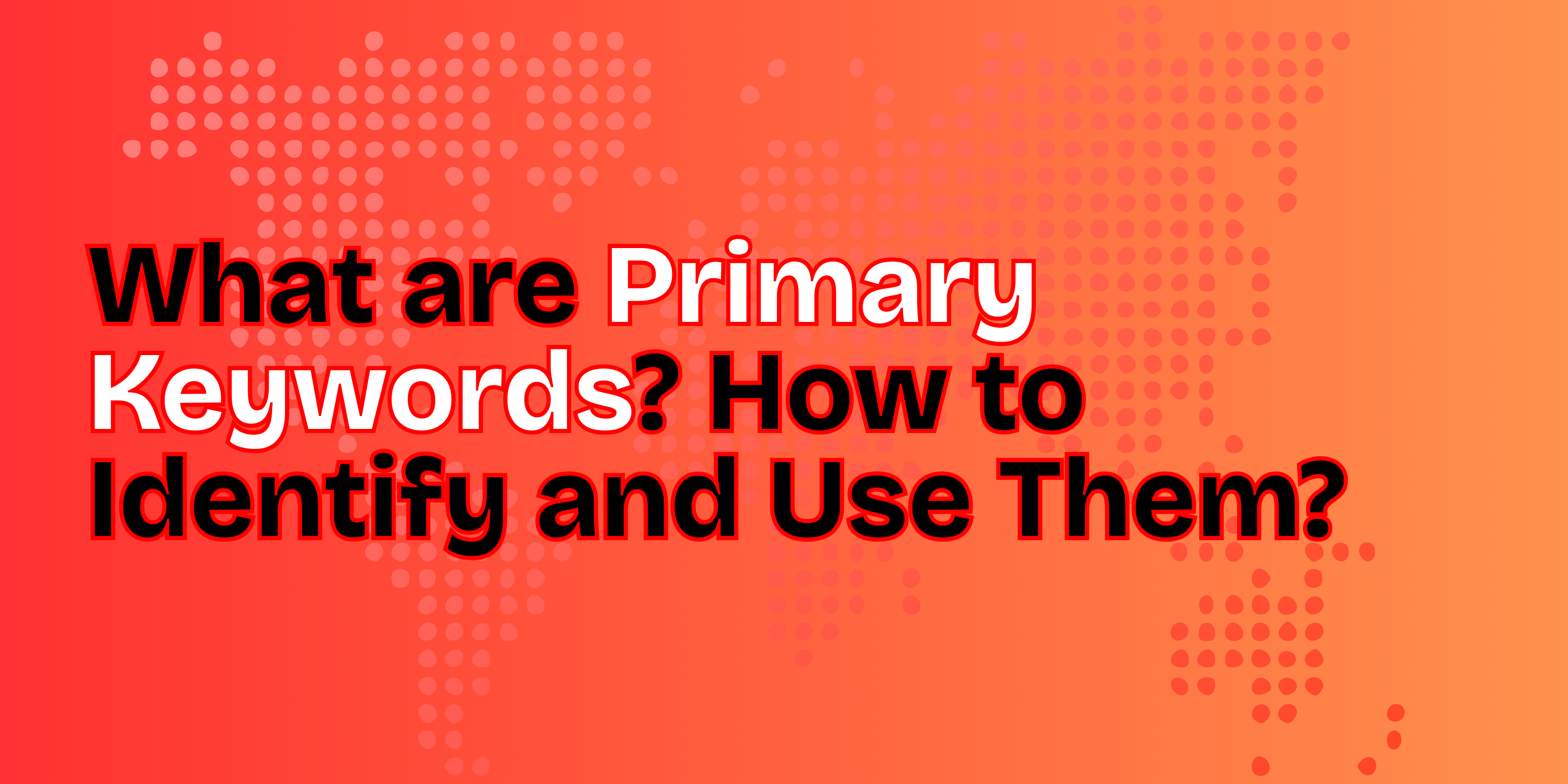When it comes to search engine optimization (SEO), you’ll often hear the term Primary Keywords. These are the foundation of any content strategy, but many beginners aren’t entirely sure what they really mean or how to use them effectively. In simple terms, primary keywords in SEO are the main search terms that define the focus of your page or blog. They’re what your audience types into Google when they’re looking for information, products, or services related to your niche.
In this Beginner’s guide, we’ll dive deeper into what primary keywords are, how to identify them, and the best ways to use them strategically so your content stands out in search results.
Table of Contents
What Are Primary Keywords in SEO?
Primary keywords are the main search terms that define the topic of your content. They represent what people type into search engines when looking for information, products, or services related to your business. Think of them as the “core focus” of your content.
For example:
- If you’re writing about yoga mats, your primary keyword might be “best yoga mats.”
- For a blog about digital marketing, it could be “SEO strategies.”
Your primary keyword should be directly connected to the main purpose of your page or blog.
Why Are Primary Keywords Important?
Primary keywords set the direction for your content and help search engines understand what your page is about. Using them properly can:
- Improve your search engine rankings.
- Attract the right audience.
- Increase organic traffic.
- Support your overall SEO strategy.
Without a clear primary keyword, your content risks being too broad or confusing to both readers and search engines.
How to Identify the Right Primary Keywords
Choosing the right keyword requires research and understanding of your audience. Here’s how you can identify them:
- Understand Your Audience’s Intent
Ask yourself: what problem is my audience trying to solve? Keywords should match user intent—whether informational, navigational, or transactional. - Use Keyword Research Tools
Tools like Google Keyword Planner, Ahrefs, or SEMrush can show you search volume, competition, and related terms. - Check Competitors
Look at what keywords your competitors are targeting. This can reveal valuable opportunities you may have missed. - Balance Search Volume and Competition
Don’t just pick the keyword with the highest search volume. Go for one that has enough searches but isn’t overly competitive.
How to Use Primary Keywords Effectively
Once you’ve chosen your primary keyword, it’s time to apply it strategically. Here’s how:
- Include it in the title – e.g., “10 Best Yoga Mats for Beginners.”
- Place it in the meta description to boost CTR.
- Add it to your headings (H1, H2s) naturally.
- Use it in the first 100 words of your content.
- Sprinkle it throughout the content without overstuffing.
- Optimize images with alt text containing the keyword.
Remember: keywords should feel natural in your writing. If it sounds forced, rephrase the sentence.
Common Mistakes to Avoid
- Keyword Stuffing – Using the keyword too many times hurts readability and SEO.
- Ignoring Variations – Use related terms or synonyms to make your content richer.
- Targeting Irrelevant Keywords – Make sure your keyword aligns with your actual content.
Final Thoughts
Primary keywords in SEO are the backbone of any content strategy. By identifying the right keyword and using it effectively, you not only help search engines understand your content but also deliver exactly what your audience is looking for.
If you’re looking to master keyword research and create content that ranks, YourRankers can help. Our SEO experts specialize in keyword strategy, content optimization, and driving targeted traffic to your site.
👉 Ready to optimize your website? Visit us at YourRankers and let’s get started today!




